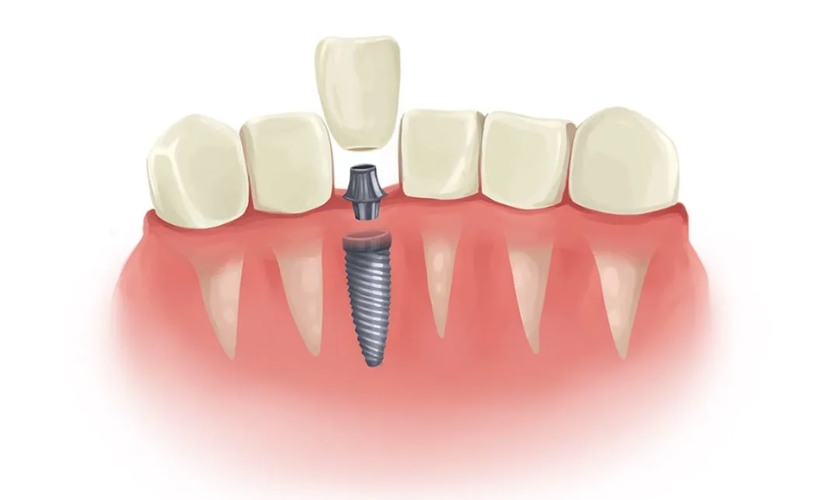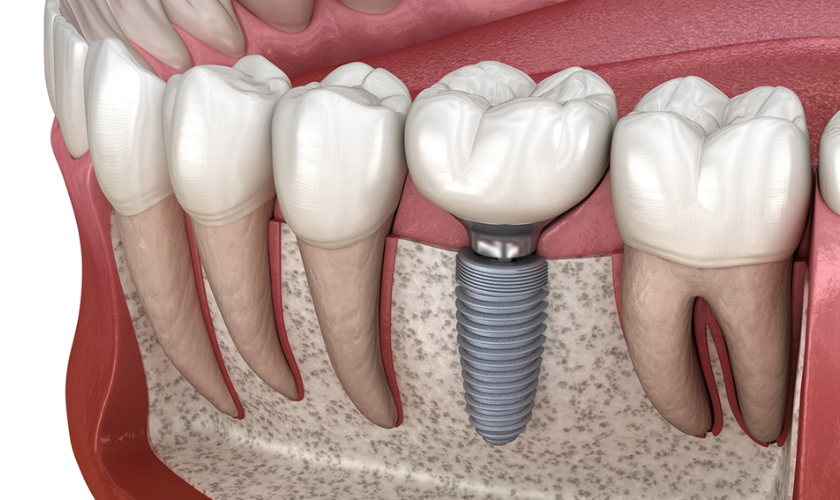
Dental implants have revolutionized the way we think about tooth replacement, offering solutions that not only look like natural teeth but also function in a similar manner. One of the critical aspects of their success is how the gums grow and bond to the implant, creating a stable and aesthetic result. This complex biological process is key to ensuring that dental implants last and perform well over time. In this blog, we will explore the anatomy of the gums, the integration process of dental implants, and how proper care ensures the longevity of dental implants.
Understanding the Anatomy of Gums
Gums, or gingiva, are the soft tissues that surround and support our teeth. They play a crucial role in oral health, providing a seal around teeth that protects the underlying bone and serves as a barrier to bacteria. Healthy gums are essential for maintaining overall dental health and are particularly important when it comes to dental implants.
The Role of Dental Implants
A dental implant is a titanium post that is surgically inserted into the jawbone. It acts as a substitute for the tooth root and provides a strong foundation for a replacement tooth, known as a crown. The success of a dental implant largely depends on a process called osseointegration, where the implant integrates with the bone. However, the bonding between the gums and the implant is equally vital.
How Gums Bond with Dental Implants
The process of gums bonding to dental implants is intricate and involves several biological processes:
- Healing and Initial Attachment: After a dental implant is placed, the first step is the healing of the gum tissue around the implant. During this phase, the gums form a seal around the implant post, similar to how they grow around a natural tooth root. This initial attachment is crucial as it helps protect the deeper structures from infection and provides initial stability to the implant.
- Biological Sealing: The next phase involves the creation of a biological seal between the gums and the implant. This is achieved through the growth of specific cells in the gums that adhere to the surface of the implant. These cells help to form a barrier that protects the bone and the underlying tissues.
- Maturation and Integration: Over time, the bond between the gums and the implant strengthens. The soft tissues mature and integrate more completely with the surface of the implant. This integration is supported by the continued health of the gum tissues and ongoing care.
Factors Affecting Gum and Implant Bonding
Several factors can influence how well gums bond to dental implants:
- Quality of Surgical Technique: The skill and experience of the dental surgeon play a crucial role in how well the gums bond to the implant. Precise placement and handling of the tissues can promote better healing and integration.
- Implant Surface and Material: The surface texture and the material of the implant can affect how well tissues adhere to it. Titanium is commonly used because it is biocompatible and supports osseointegration and soft tissue adherence.
- Patient’s Health: The overall health of the patient, especially the health of their gums and bones, impacts how well the gums will bond to the implant. Conditions such as diabetes or habits like smoking can interfere with the healing process.
- Oral Hygiene: Good oral hygiene is crucial for the successful integration of gums and dental implants. Regular brushing, flossing, and dental check-ups help maintain the health of the gums and prevent infections that could disrupt the bonding process.
Conclusion
The integration of gums with dental implants is a pivotal aspect of the success of dental implant surgery. Understanding the processes involved and the factors that influence them can help patients and dental professionals alike to ensure the best outcomes. Proper care, good oral hygiene, and regular dental visits are essential to maintain the health of both the implants and the surrounding tissues, ensuring that dental implants last for many years.
As dental technology and techniques continue to evolve, the process by which gums grow and bond to dental implants will only become more refined, enhancing the effectiveness and durability of this important dental treatment.



